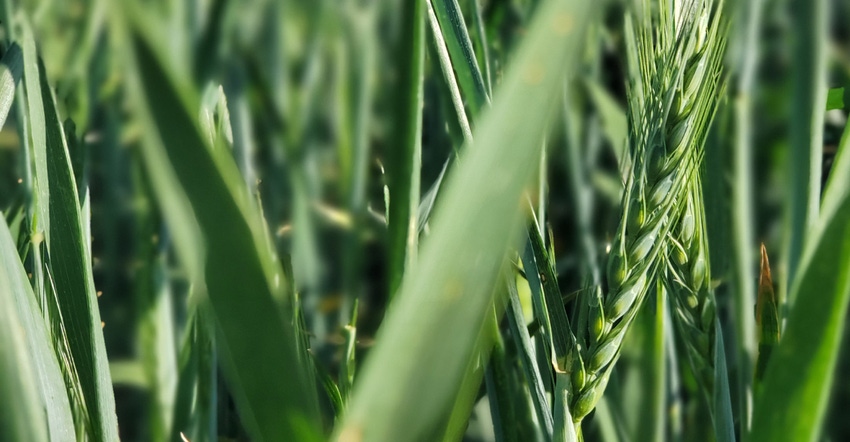
Texas High Plains wheat farmers are concerned that persistent drought will hamper field preparation for fall seeding. In Northeast Texas, too much moisture is often as much a problem as too little.
“We try to plant early and hope for a rain,” says Scott Irlbeck, who farms near Tulia, Texas, with his father Albert.
“It’s been dry all summer, and I am concerned about prepping fields for planting wheat,” Irlbeck says. “It’s time to get fields ready, but in a couple of fields I tried to plow, the regular plow was not going deep enough. A chisel plow brings up big clods, and if we do not get a rain, we can’t drill wheat. I am a little worried about getting ground prepped.”
Irlbeck says he needs to get rid of some weeds (mostly cochia and pigweed) where drought has limited herbicide efficacy. “It’s hard to kill droughty weeds with herbicides,” he says. “We have to do some tillage.”
Planting Date
Irlbeck typically likes to plant wheat by late September, a portion for grain only, and other acres for grazing and grain.
“Some have pushed that up a bit to get more grazing out of the wheat.” He and his dad prefer to wait a few days. “We can run out of moisture or army worms can come in. Even without moisture, we want to plant by late September.”
Ben Scholz farms corn and wheat near McKinney, Texas, and says in Northeast Texas, a wet planting season can be as challenging as a dry one.

“Moisture is not usually critical here,” he says. “Sometimes, we have excess moisture.”
He says farmers in the area who graze wheat, typically start planting in September. “But growing for grain, I want to get past the Hessian fly infestation period, from early September to early October. Any time after October 15, it’s pretty safe to plant wheat.
“That gives us enough time to get a stand established. From then until it begins to joint, it’s just a grass.” He says planting in that window allows wheat to vernalize and to begin tillering. “Planting later than mid-December, we may not get sufficient tillering necessary for higher yields.”
Variety Choices
Scholz depends on variety trials to select the best soft-red winter wheat for his operation.
“We keep testing sites in the region and keep up with trials showing yield and disease resistance; we encounter more disease pressure in this part of the state than further west.”
He grows wheat for grain, and all soft red. “Research shows we can overcome soft wheat price deficiencies with higher yield in this area,” he says. “We gross more dollars per acre.”
Irlbeck says they tend to stay with what has worked well and will watch new varieties for a few seasons before adding them to their fields.
See, 5 considerations for winter wheat seeding
“We plant mostly what worked well in the past,” he says. For the past three years, that’s been TAM 114. “We have been really impressed with it. We had a great harvest last season, under some pretty dry conditions.”
Some winter moisture and a few spring showers helped it along, he says. It turned dry. “We had a few little pockets of rain; sometimes we would catch a tenth of an inch. We’re now in one of the hard drought levels. So, it’s a little scary, not a lot of optimism going into fall planting.”
FERTILITY
Scholz has adjusted fertilization over the past few years. “I start out with a blended phosphate fertilizer with a little nitrogen and zinc, 9-34-5, broadcast just before planting, enough to give it a little growth.
“We’ve gone through some research data on the farm, zoned fields with a Veris tool to get soil structure, soil type pH, organic matter and other data to match nutrients with soil tests. We also tissue test and match fertility with that.”
He splits spring fertility, 90 to 100 units (22-0-4) split 50/50 in two applications, one in late January or early February. He adds the second in late February or early March. He adds a fungicide with one of those applications.
“We make one fertilizer application in the spring, mostly phosphorus and nitrogen,” Irlbeck says.
He’s seeing a bit more need for phosphorus, adding a little bit at a time. “We’re trying to balance how much we spend up front, tracking how much expense we can invest before we have a crop made. We always hope for a good snow in winter; snow is good for winter wheat since we get some nitrogen from it.”
Irlbeck says the arid climate of the High Plains means a fungicide is not a typical expense.
WEED ISSUES
Scholz says ryegrass poses the biggest threat in the northeast corner of Texas. “We’re seeing more glyphosate resistant ryegrass,” he says. He relies mostly on Axial XL and applies a broadleaf herbicide just before planting.
As crunch time approaches for Southwest wheat farmers, they will be making final decisions on varieties, planting date, fertility and crop protection. Location makes a difference. They’ll also be watching weather predictions, hoping for favorable conditions for fall planting dates.
About the Author(s)
You May Also Like






